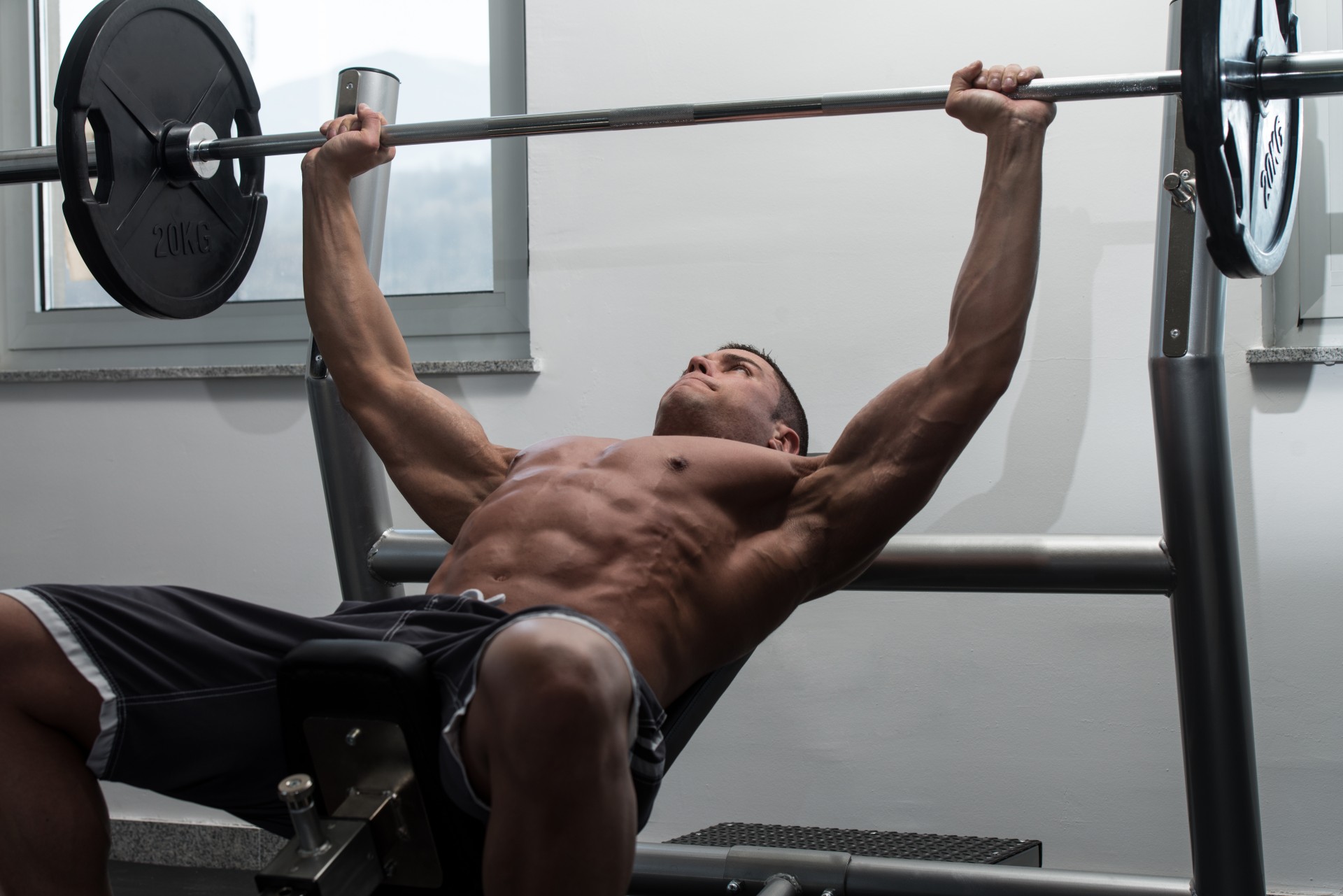
TRAIN SMARTER
SIMPLE FIXES TO MAKE YOUR WORKOUTS SAFER AND MORE EFFECTIVE.
TIP #1:
OPPOSITES
ATTRACT
Training one muscle makes the opposite muscle momentarily stronger. Here’s how to take advantage.
Exercise scientists have shown that when you train one muscle group, such as the biceps, the antagonist muscle group—in this case, the triceps—are momentarily stronger and primed for activity. This is a natural way for your body to try to maintain balance. It’s also why supersets for biceps and triceps and other antagonist muscle groups, hamstrings and quads or chest and back are so popular amongst fitness enthusiasts.
Here’s a great way to reap the benefits of this effect on chest day: the next time you bench press, do a set of band pull aparts first. Grab an exercise band with both hands and hold it at arm’s length in front of you. Pull the band apart as far as you can; the band should stretch across your chest with your arms fully outstretched. This will give a little bit of work to your lats and to your rhomboids—the muscles in between your shoulder blades—and have the ancillary effect of warming up your shoulders. After a quick set of 10, lie down to bench. Your pressing power will temporarily increase.
TIP #2: SCULPT YOUR
TRICEPS DOING PUSHDOWNS THE RIGHT WAY
HOW THE MOVE WORKS: Attach a rope attachment to a high cable pulley. Grasp the rope at both ends and press the weight down, flaring your hands out at the bottom of the movement. This is one of the best exercises for working the triceps muscles—on the back of your upper arms. Do 3-4 sets of 12-15 reps. Choose a weight that makes getting the total number difficult.
MAKE THE MOVE BETTER: Try doing them on your knees. It’s a lot harder to use momentum and cheat when you can’t bend your knees and put your weight into the move. For added effect, imagine that your elbows are bolted to your rib cage as you press down. Keeping your elbows fixed in space will prevent the shoulders from getting in on the move and taking emphasis away from your triceps.
TIP #3: GET LOOSE
Every desk jockey gets tight hip flexors, quads, and hamstrings from sitting most of the day, and this condition doesn’t just impedes one’s ability to train, but also to run, squat, and sometimes, walk properly. Keeping loose isn’t only important for athletes. It’s important for everyone’s quality of life. Here are four ways to do it right.
A) SQUAT-TO-STAND: Bend at the waist and grab your toes, wrapping your right hand over the front of your right shoe and your left hand over the front of your left shoe. Keeping your hands on your toes throughout the move, extend your knees to lift your butt up in the air. You’ll feel a stretch in your hamstrings as you do this. Do 1-2 sets of 10 reps.
B) HIP FLEXOR STRETCH: Drop to one knee and lean forward. You’ll feel a stretch in the hip flexor on the side that the knee is down. Stretch for 10 seconds and then switch sides. Do an equal number of reps on each side.
C) QUAD STRETCH: Bend your right knee and grab your right foot with your right hand. (You’ll want to support yourself against a wall or other sturdy object.) Slightly extend your hip until you feel a stretch in your right quad. Hold the position for 10 seconds and repeat on the other side. Do an equal number of reps on each side.
D) HAMSTRING STRETCH:
Prop up one foot on a stable object such as a bench (see photo below), keep your knee straight and lean forward, reaching for your toe until you feel a stretch in your hamstring. Hold for 10 seconds and then switch sides.
TIP #4
GET MORE POWER
If your squatting routine tends to drag from a lack of energy or strength, try adding a light, explosive move before the main move. For instance, before barbell squats, do 10 unweighted squat jumps. Simply squat low to the floor, then explosively come back to the starting position, jumping as high as you can at the top. The explosive movement utilizes fast-twitch muscle fibers, which might stay dormant during a standard set of barbell squats. Move from the explosive exercise straight into the regular exercise and, rather than feel fatigued, your set will feel fresh and stronger than before.
Originally published in Robert Irvine Magazine.

